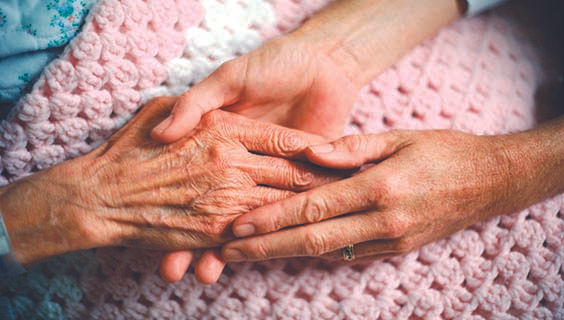2024 1st Place GHHS Essay Contest Winner
- hawaiighhs
- Mar 1, 2024
- 4 min read

"Embracing Humanity in Medicine: A Reflection on Providing Dignified End-of-Life Care"
Bao Xin "Hailey" Liang, MS3
One of my most pivotal moments as a third-year medical student occurred during my Internal Medicine rotation while caring for a renal transplant recipient who was initially admitted for intractable fatigue and severe anemia but subsequently developed various severe, perplexing complications and infections. Despite efforts to diagnose and treat, her health deteriorated rapidly. She started to have bloody bowel movements, her hemoglobin continued to drop quickly to the point of requiring another transfusion, and her renal function plummeted. During the second week of hospitalization, she caught COVID, and her respiratory function drastically declined. We eventually consulted a nephrologist who suggested we consider scoping her for CMV colitis.
Diagnosing tissue-invasive CMV infection, however, requires invasive procedures like colonoscopy. Considering the patient’s delicate state of health, we were unsure if she could tolerate such a procedure. After thoroughly discussing the risks and benefits of getting scoped, the patient initially agreed. However, later that morning, we received a call from the nurse informing us that the patient had expressed the wish to let go and leave the world. Despite our devastation, we respected her decision and changed her status to comfort measures only. Her family was contacted, and subsequent changes were made to place her on high-flow oxygen and morphine. At noon, the family awaited updates in a conference room. Just as we arrived to speak to them, a nurse informed us the patient had voluntarily removed her oxygen mask from her face and passed away. The resident and I went to the room to confirm. I immediately spotted the high-flow oxygen mask in the patient’s hands. She was formally pronounced dead at 2 p.m..
When pronouncing someone dead, there is a particular protocol that doctors and residents must judiciously follow. Notable parts of the clinical exam include checking for the absence of a pulse and breathing, assessing for unresponsiveness, and evaluating for a pupillary reflex. When all clinical signs return negative, the physician can formally pronounce an individual deceased. Although the clinical examination for pronouncing a patient dead is rooted in a medical algorithm, there is an underlying spiritual sacredness to this act. Watching my resident perform every step of the exam and witnessing the cessation of vital signs prompted me to reflect on the nature of life. The tangible absence of life had me contemplating the cycle of life and death and the fragility and impermanence intrinsic to it. I had come to realize then that as healthcare providers, this simple act of pronouncing someone dead is a sacred process that allows us to recognize the inherent dignity of an individual and their journey beyond the physical realm. This, in part, is what makes medicine human and partially allows us to provide patient-centered care.
After pronouncing the patient dead, we met with the family to convey the news. It was the most challenging conversation I witnessed as a medical student. While most family members remained composed, one was profoundly affected, expressing heart-wrenching phrases like, “Why did you leave us behind?” and “Why didn’t you wait for us.” Despite my intention to stay strong, these words deeply impacted me, leading me to cry with the family. Upon returning to the hospital the following day, I had a debriefing discussion with my senior resident. When she inquired about my emotions, I admitted to feeling guilty. Despite understanding that I was a medical student in training, I still felt a sense of responsibility for the patient’s death, wondering if earlier actions could have prevented her from removing the high-flow oxygen mask. I also felt I let the family down by crying during the previous day’s conversation. My resident reassured me that such emotions were valid, emphasizing that it’s acceptable for healthcare providers to show vulnerability, as it inherently signifies our humanity. Her words gave me a new perspective. I realized that expressing emotions is not a sign of weakness but an acknowledgment of our shared humanity. When we as healthcare professionals invest our emotions into the care we provide, it reinforces the understanding that the patient before us is not merely a list of medical issues but a human being deserving of compassion and empathy. At the same time, we also need to think about the clinician and recognize our own humanity, that we are also humans with emotions.
Looking back, the patient’s end-of-life care transpired as a direct result of her own choices. We honored her decision by placing her on comfort measures only. Moreover, the patient was able to rightfully determine when to conclude her life by choosing to remove her own oxygen mask. Though we couldn’t alter the outcome, we managed to provide her with patient-centered medical care and gave her a dignified death. Later that day, as the family returned to finalize the paperwork, they expressed gratitude for my support and thanked me for crying with them in the conference room yesterday. This poignant moment echoed my earlier discussion with my resident and reaffirmed why I had decided to go into medicine.
As William Osler states, “The practice of medicine is an art, not a trade; a calling, not a business; a calling in which your heart will be exercised equally with your head.” Practicing medicine with humanism allows us to recognize our patients as human beings in front of us. My experience with this patient helped me understand what it means to let a patient “die with dignity” and what it means to put a patient at the center of care. When we know our patients and know who they are, it helps to improve our clinical experience and ultimately makes us better healers.




































Comments